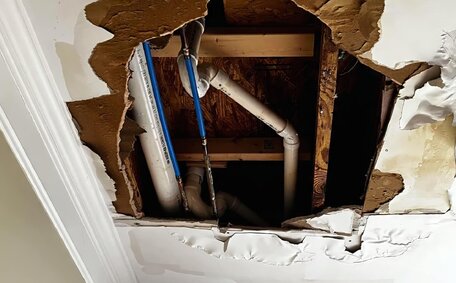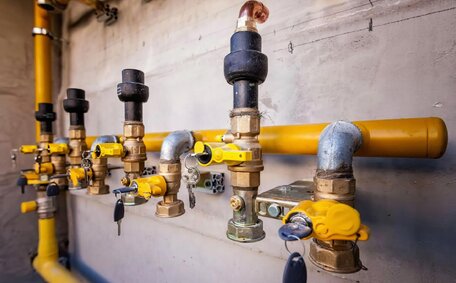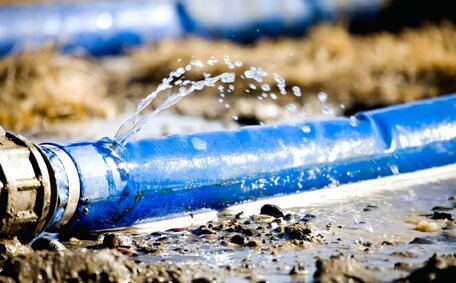Introduction to moving hot water systems
The relocation of your hot water system within your home demands careful planning and strategy. At Lindfield Plumbing, with over 10 years serving Sydney, we have the expertise to advise whether relocating your system is the right choice.
Some motivations for moving your water infrastructure encompass home renovations, boosting energy efficiency with heat pump water systems, or repositioning for greater convenience. However, it’s not always a straightforward process. There are installation requirements, building codes, and safety issues to consider before taking on such a project.
Our team is equipped to manage the full relocation and installation of your hot water infrastructure.
Should relocation be inadvisable, consider upgrading to a tankless hot water heater, leveraging energy efficiency and off-peak tariffs. As your trusted local plumber, We can inspect your existing set-up and its water handling systems and provide advice tailored to your situation.
Continue reading for an in-depth look at the nuances of relocating hot water systems or reach out to Lindfield Plumbing for personalised assistance. We’re here to discuss your options and provide expert guidance.
Reasons you may need to move your hot water system
Several scenarios may prompt the question, 'Should I move my hot water heater?'
- Home renovations - If you are remodelling your house, you might require moving the water heater to fit new designs and features.
- Creating space - Relocating the hot water tank may free up space, accommodating home expansions or layout changes.
- Improve efficiency - Older or faulty units might drive a transition to gas hot water systems that offer heightened efficiency. When considering energy efficiency to reduce costs, contemplate if repositioning your heater to a more apt location is necessary.
- Safety hazards - Faulty units, raising concerns about potential gas or water leaks, may necessitate relocating your hot water tank. Moving a damaged water heater outside is often a safer alternative to repairs.
- Access and convenience - For more efficient garden watering or bathroom access, relocate your heater closer to these areas to minimise pipe-run wastage.
- Tank failure - Issues like mineral buildup from hard water can damage components, necessitating replacement.
The Lindfield Plumbing team can inspect your existing set-up and its heater components to provide tailored advice on whether moving your system makes sense. Our services include overseeing compliance paperwork and requisite adjustments.
Evaluating if you can move your existing system
When considering whether you can move an existing hot water system, the first step is to inspect the current unit. Technicians at Lindfield Plumbing evaluate the system’s age, type, condition, and efficiency to decide whether relocation or replacement is advisable.
Repositioning may be challenging for older systems with wear and mineral buildup. Modern systems like solar hot water or split system heat pumps are often easier to relocate, thanks to their design and new technological advancements. We inspect essential components such as pressure relief valves and heat exchangers for leakages or damages that could pose relocation risks.
Consider installation factors that could warrant replacing your current system. Your unit’s relocation may be constrained by ceiling height, requiring a more compact model in some instances. venting and drainage protocols for larger tanks also influence the practicality of retaining the existing model.
Our professionals assess the feasibility and cost implications of your hot water system’s relocation. We offer recommendations and comprehensive pricing for water heater upgrades to facilitate cost savings. With over 10 years of local experience, Lindfield Plumbing can advise whether moving or replacing your hot water unit is the right decision.
Key considerations when moving a hot water system
Moving a hot water system requires careful planning and consideration of several key factors, including:
- Location - The new site should have ample room for the heater, as well as suitable ventilation, drainage, and maintenance access. Ceiling heights, structural support and clearances for flues/exhaust also need checking.
- Water supply and drainage - Existing pipework may need to be re-routed to adjust hot water pressure to maintain water pressure, increased pipe diameter may be needed for longer runs or to reduce pressure losses in location your heater previously occupied.
- Electrical/gas supply – Adequate capacity must be available in the area you plan to relocate the system, which you will need to confirm. Additional circuits, isolation valves, MCBs etc. you’ll need to consider.
- System type and condition – It might not be practical to relocate an old unit; investing in a new system could be the more economical choice. We can advise whether upgrading to a Rheem hot water system during the relocation makes sense.
- Building regulations - If relocating outside, roof stand frames etc need approval. Systems over 15 years old will likely need upgrades.
- Safety - We ensure all heating system components like leak prevention devices, anti-scald valves, earthquake restraints, and signage comply with stringent codes.
The task of relocating water systems is intricate, integrating gas, electrical, and plumbing endeavours. Lindfield Plumbing handles the entire job including all necessary council permits – saving you headaches. With more than a decade of local plumbing experience, we assess the feasibility of system relocation and expertly coordinate all requisite trades.
Using professionals vs DIY when relocating systems
While some homeowners consider DIY hot water system relocation to save costs, the intricacies of tankless water heaters can be deceptive. Yet, certain hazards come with this method that a professional plumber can help make less daunting.
Gas heater gas models and electric types contain hazardous components like heating elements and pilot lights. Accidental gas leaks, pump system malfunctions, electric shock hazards, and flue gas complications represent one most common risks to you and your family’s safety without expert skills and equipment.
Incorrectly relocated pipework, components, or tanks can lead to leaks or severe failures; we ensure a secure and stable move. Trying to save money your relocation process could end up costing you more time and money, amounting to thousands in property repairs.
There are also legal factors to consider. Hot water systems over 15 years old will likely require upgrades to meet modern compliance standards when moved. And relocating outdoor units requires obtaining council approval for structural additions like roof stands.
At Lindfield Plumbing, our 10+ years of local plumbing experience means we handle all technical and regulatory aspects. From isolating water lines, draining and safely extracting your existing system, to managing new supply pipe adjustments – our experts oversee the complicated end-to-end process so you can avoid problems and unnecessary risks.
When weighing up the risks, it’s rarely worth attempting a DIY relocation job. Get in touch today to learn how Lindfield Plumbing can safely manage your system repositioning and provide any required upgrades.
Meeting regulations and building codes
When changing the location your water system occupies in Sydney, there are important regulations and building codes to consider for legal compliance and safety:
- Electrical work during system alterations must be carried out by a licensed electrician adhering to AS/NZS 3000 standards.
- Gas installations - Adjustments to gas lines, valves, or flues must adhere to AS/NZS 5601 and be done by licensed plumbers.
- Plumbing - Water supply and drainage adjustments must meet national plumbing standards such as AS/NZS 3500.
- Structures - Adding roof stands, wall frames etc. requires development approvals from your local council.
- Occupational health - Compliance with Safe Work Australia’s guidelines regarding hazardous chemicals, protective gear, and signage is mandatory.
At Lindfield Plumbing, we remain up to date with all state policies and codes to ensure your system relocation is fully compliant. With 10+ years of local experience, we take the headaches out of the complex process of moving hot water units.
We organise all necessary permits and upgrades to avoid fines or issues down the track.
Contact us today to find out how we can manage your relocation project and offer ongoing maintenance for a reliable hot water supply in your home.
How moving systems affects efficiency
Relocating solar hot water systems, like any other major appliance, provides an ideal opportunity to assess your existing unit and potentially upgrade to a more energy efficient model. Over time, older hot water systems may become less efficient and lose heat due to mineral deposits and component wear.
By moving to a newer gas hot water heater system, electric, heat pump or tankless model that meets strict current standards in your new location, you could achieve notable energy savings. Modern electric hot water systems offer superior insulation, precise temperature settings, and rapid heating for efficient, minimal-waste hot water delivery.
We take a consultative approach at Lindfield Plumbing when moving systems, suggesting ways can save on energy bills long-term by upgrading to a new Rheem hot unit. Taking into account your household’s water usage, ongoing costs, government rebates, and payback periods, we identify the optimal solution for you.
Repositioning pipework when you relocate your hot water system and optimising run lengths during relocation also plays a big role maximising efficiency. Shorter pipe distances mean less heat loss in transit from the unit to the outlet, which can significantly increase your system’s efficiency. Carefully calibrated pressure relief valves also help.
Although disruptive, relocating an outdated hot water system could lead to considerable long-term savings. Consult Lindfield Plumbing to understand your best upgrade options when relocating.
Upgrading to tankless heaters
When relocating your hot water system, upgrading to an energy-efficient tankless model is worth considering. Tankless systems, also known as continuous flow heaters, provide hot water by rapidly using energy to heat water as it flows through the unit, without the need for a storage tank.
By going with a tankless gas water heater, you can enjoy an uninterrupted supply and potentially lower energy bills, all while saving space by eliminating a bulky storage system. Mains pressure tankless heaters address the pressure issues sometimes associated with electric storage models, which might otherwise require a water tank loft. Wall-mounted tankless units offer flexibility for outdoor relocation or installation on different floors.
We will advise whether a tankless upgrade makes sense based on your household’s usage and can provide different fuel type options - gas tankless models are common in Sydney due to higher flow rates from our mains gas supply.
With over 10 years of local experience, Lindfield Plumbing can install new efficient tankless heaters to save you money and hassle when relocating your system.
Steps for successfully moving hot water systems
Relocating a hot water system necessitates a complex process with crucial safety protocols. Here are the key steps our professional plumbers take:
- Commence by turning off the power and water supply, followed by draining the cold water tank. Ensure all valves for your water supply are shut off.
- Disconnect the existing connections to the header tank, as well as the old water and gas lines, including electrical and flue systems.
- Carefully extract the old water tank into the new area using an appliance dolly, being cautious of doorways and tight spaces.
- Inspect the new location for adequate space, load-bearing capacity, ventilation and access.
- Re-route new water, gas and electrical connections to updated safety standards.
- Securely fasten the tank base and ensure it is appropriately elevated.
- Refill supply lines, double check for leaks, reinstating the heater to its functioning state, and test.
- Flush the tank and lines to remove sediment before using hot water.
- Apply relevant warning labels and signage to the unit.
Lindfield Plumbing highly recommends using our professional relocation services due to the numerous safety considerations and technical steps involved. Our 10+ years of local expertise means your system is moved safely and legally.






